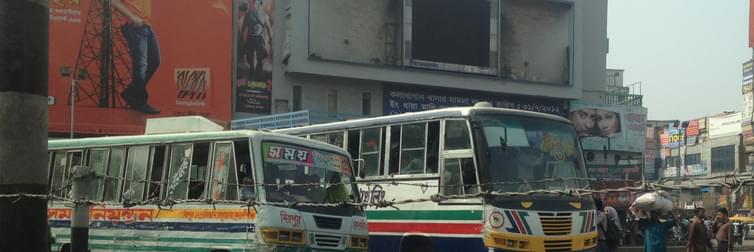
blog: Understanding Dhaka's public transit routes using open data
Tuesday 22nd November 2016
Open data is transforming the way that urban transport authorities manage and plan their public transport networks. It allows them to gain valuable insight into the distribution of public transport services and then re-imagine how the network could function if services were re-distributed, or frequencies were altered.
In 2015 ITP began working with the Dhaka Transport Coordinating Authority (DTCA), on behalf of The World Bank, to demonstrate how open data could inform the management and mapping of the city's existing and proposed public transport services.
Our work with DTCA involved two key tasks. The first was to provide in-house training to their team to help them understand how open data could be coupled with open source network management and modelling tools to aid transport planning. We used "Transport Analyst" – an accessibility modelling tool - and "GTFS Editor" – a tool for digitising transport network data – as the basis for our training.
Our second task involved working with the DTCA team to build two GTFS(General Transit Feed Specification) feeds for Dhaka, one which maps all public transport services within the metro area and a second which was a representation of the public transport services used by females.
The latter GTFS feed was developed based on secondary research that explored the socio-cultural barriers to public transport use for females, such as harassment and antisocial behaviour. By comparing the accessibility profiles for both GTFS feeds in relation to the citys population distribution and key economic activity areas, we were able to estimate and visualise the extent to which publicly transport accessibility for females in Dhaka is significantly lower than for males. The impact of this lower accessibility profile is that many females typically experience longer journey times and higher travel costs than their male counterparts on certain routes, and on certain types of bus service. Our research highlighted the importance of ensuring that currently planned BRT and MRT mass transit investments in Dhaka are designed so as to provide safe environments within which females can travel. In doing so they will dramatically improve accessibility for females who live and work in the city.
Full details of the project, and our final report published by The World Bank, are available online here: http://documents.worldbank.org/curated/en/982301473880705884/Final-report.
If you would like to know more about this project, and the tools we used, please contact Neil Taylor or Ian Stott on +44 (0) 115 9886905.
